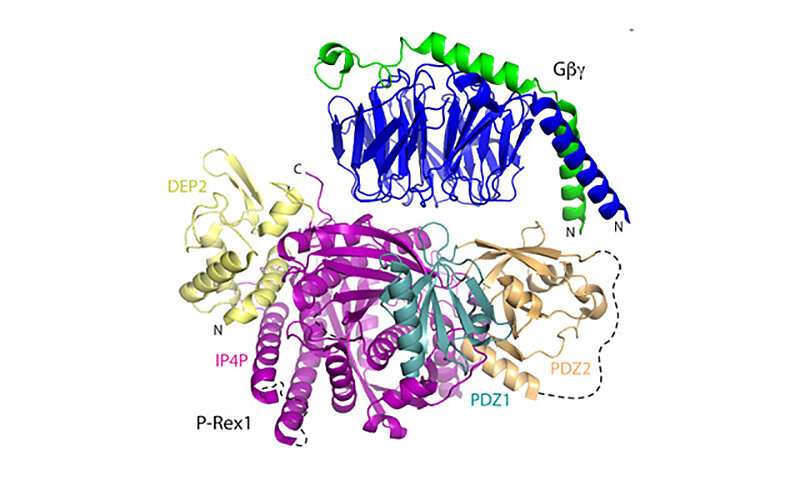Enzyme trigger that tells cells to move characterized for first time

Some cells have the ability to travel in the human body, and depending on the circumstances, this can be either very, very good or very, very bad.
White blood cells speeding toward an infection are the good guys in this story, while cancer cells spreading to metastasize and conquer wear the black hats.
The ability to control this movement could lead to drugs that could boost a body's response to an infection, or thwart the movement of cancer cells.
John J.G. Tesmer, Purdue University's Walther Professor in Cancer Structural Biology, is part of a research team that used an advanced electron microscope technique, cryo-electron microscopy, to determine the precise shape of the proteins involved. The research is published this week in Science Advances.
"Our structural data will allow the development of models for these proteins and their interactions, which could eventually lead to new therapies," Tesmer said.
The enzyme PREX1 allows cells to reorganize their cytoskeletons for movement within the body.
"During metastasis, many common cancers find a way to express the same enzyme which, in turn, helps them move around and colonize different niches in the body," Tesmer said. "By interfering with the enzyme function, we might have an anti-metastatic cancer strategy.
"But this is hard to do without knowledge of the structure of the enzyme or of how it is regulated by other molecules. This is why we are excited about these results."
The research team also was able to observe the enzyme bound to a protein that regulates it, known as G-betagamma.
"Moreover, the structure of PREX1 revealed it has a configuration not previously seen in eukaryotic organisms," Tesmer said. "It has unique properties that may allow us to selectively target pockets on its surface with designed chemical compounds that may block G-betagamma from binding."
More information: Jennifer N. Cash et al. Cryo–electron microscopy structure and analysis of the P-Rex1–Gβγ signaling scaffold, Science Advances (2019). DOI: 10.1126/sciadv.aax8855
Journal information: Science Advances
Provided by Purdue University




















